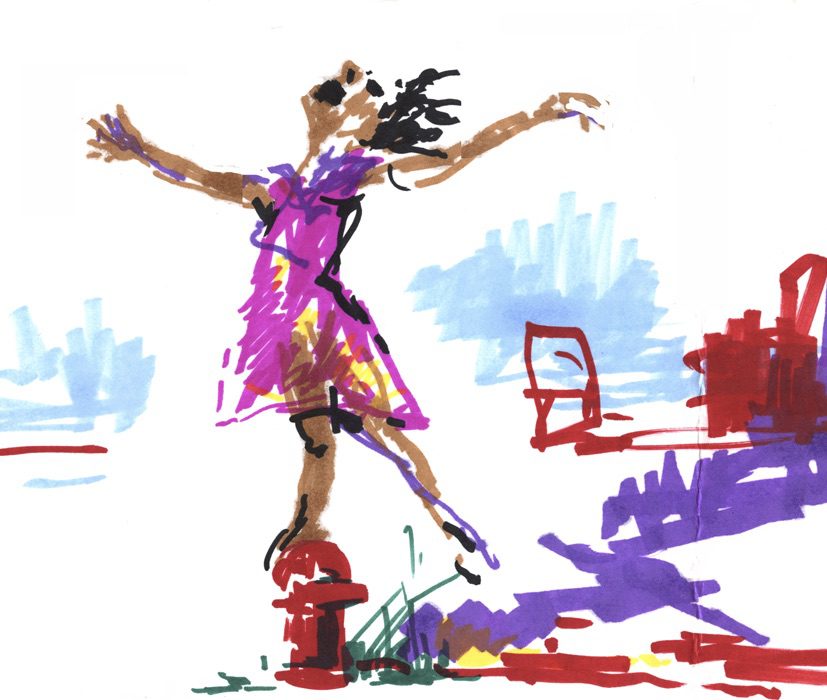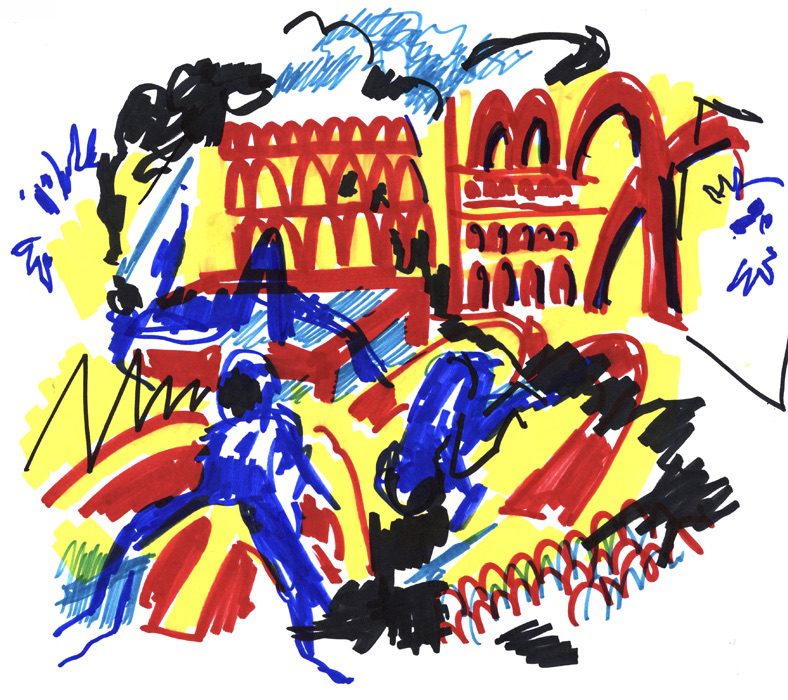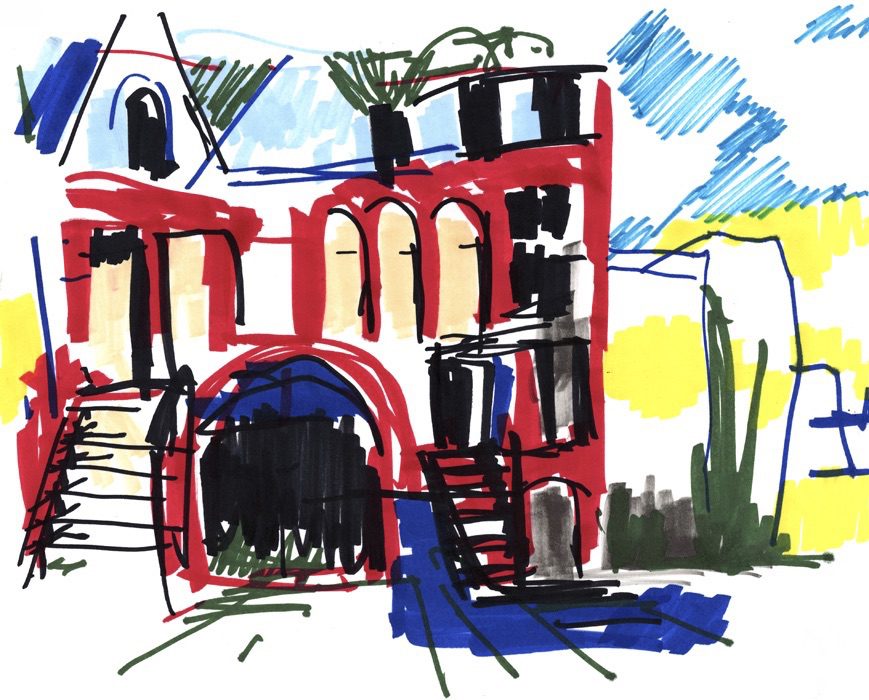The first time I wrote about addiction was in the mid-1990s, in a creative writing class at Columbia University. The professor asked us to write about something beautiful from our childhood. I wrote about Teresa, my friend Ulysses’s mom, who got lost to crack like so many of our people did in the 1980s. Teresa became the “neighborhood crackhead.” Back then, we all had a “neighborhood crackhead.”
Teresa was different when she was high. Once, she balanced herself on a fire hydrant, arms spread wide like wings, she laughed loudly, hair wild, she looked like something straight out of a circus act. She always danced and sang when she was high, eyes closed, mouth in a big smile—it was the only time she wasn’t ashamed of her rotting teeth. “Todo tiene su final. Nada dura para siempre. Tenemos que recordar que no existe eternidad…” As the song went on, her smile became a frown and tears came, soft and quiet. I’d watch her and wonder at how beautiful and sad she was at once.
I was just a kid, but somewhere inside me I knew something had happened to this woman who cried whenever she sang about loss and endings.
When she was sober, Teresa rarely came out of her house, and when she did, she hid her face, and she could be so mean. Sometimes, she’d call to me from her second-floor window; she’d lower an old rice bag on a string with seventy-five cents in it so I could go to the newsstand up the block to get her the World News, the tabloid that claimed that Elvis was alive and living on Mars, and Big Foot was his cousin. In return she’d give me stacks of back issues. I’d read them up in my plum tree in the backyard. I am a writer, in part, thanks to Teresa.
When that professor returned my piece he said, “This isn’t writing.” He didn’t have the cojones to look at me when he said it.
He was telling me what the world told me at every turn: there’s nothing beautiful about your people or where you come from.
Nostalgia is a confusing thing. It isn’t always for the neat and pristine. It’s sometimes a longing for something you know wasn’t always pretty but which was always home. My Brooklyn is the gritty Brooklyn of the Domino Sugar Factory and rubble and crack. It isn’t the Brooklyn of today with its community gardens and artisanal mayonnaise shops, yoga studios and art galleries. My Brooklyn is the Brooklyn no one wanted to move to. It’s the Brooklyn of the rainbow-colored vials in the gutter and the gangs; la Boriqueña hanging from clothes lines across avenues. Brooklyn in the era of Adidas track suits and fat laces. Hip-hop when it was just an embryo and freestyle music blasting from the passing cards of the jodedores, the bass so loud you felt it in your chest a block away.
I’m not saying crack was beautiful. Esa droga desgracia’ destroyed us.
I’m saying people can be imperfect and still be remembered as beautiful. They can still be worthy of being written about.
I didn’t write about addiction again until twenty years later when my brother was taken out by his. When I finally did, it was to understand him and what happened to him. I’d been trying to understand addiction back when I was a young college student, too, when I was just a baby writer. I wanted to understand why the government didn’t do anything. Why they left us there to rot.
I wanted to understand why Teresa turned to drugs. What was it crack did for her that helped her escape those ghosts she never talked about. The ghosts she found in the pages of the World News.
Why did my beloved brother turn to heroin and crack? When he died in 2013, after a fifteen-year struggle with addiction, I became obsessed. I wanted to know why he snorted it that first time; I wanted to know why he picked up that needle.
I see now that this want to know and understand goes back to the 1980s, back to when crack ravaged our black and brown neighborhoods.
What happened to my Superman? What happened to Teresa?
I’ll always remember these lines I found in an article titled “Five Unexpected Things I Learned From Being a Heroin Addict”: “If you know someone who’s using or has used, you should know that this isn’t as simple as them making bad decisions. They’re running from something that, to them, seems a whole lot scarier than a needle.”
Crack was created in LA and arrived in NYC in 1985. Cocaine dealers perfected a way to convert expensive powdered cocaine into inexpensive small rocks by adding baking soda and water to the cocaine, then boiling the mixture into pellets that gave off a cracking sound when smoked, hence the name “crack.” A one-thousand-dollar ounce of powder became two hundred and eighty one-hundred-milligram vials of cracks. At ten dollars a pop, dealers made a killing. Cocaine, the rich man’s drug, became affordable to the poor.
An expert to Congress said, “it was as if McDonald’s had invented the opium den.”
Because the drug is smoked, it enters the bloodstream through the lungs, and has a much more potent and dangerous effect on the brain. The vapor gets to the brain in five seconds. The rush lasts ten minutes followed by an overwhelming depression, erasable only by more crack. Chronic use produces intense paranoia.
In 1986, the Citizens Crime Commission President Thomas Reppetto told the Daily News: “Crack crime in poor neighborhoods is at such levels that if the same were true in wealthy neighborhoods, we would be under martial law.”
But crack didn’t do to wealthy, white neighborhoods what it did to the hood, where us brown and black people lived.
In the Brooklyn I grew up in, we got used to the crunch of the vials under our feet. The dealers and addicts took over the parks and playgrounds. If you walked past certain blocks, like Putnam or Troutman, you could hear the dealers yelling, “Eight ball, eight ball.” I was a kid, but I knew they were advertising drugs.
I saw what this drug did to people like my cousin Junior, who lived with us for a few months when he came to NYC from Puerto Rico. Mom had to kick him out when she caught him smoking crack in the bathroom. Twice we came home to find our tiny railroad style apartment ransacked. I heard Mom and her partner Millie whispering that it must have been Junior. The thief ransacked the drawers where they kept their jewelry. He even took frozen meat from the freezer.
The tabloids and headlines weren’t gentle or kind to the people addicted to crack, and the truth was neither were we. When we came home, we’d push the door to the foyer in hard in case there was a crackhead in the foyer, sucking on his pipe. Usually, there was.
We gave them a wide berth when we saw them in the street. We kids played in the lumber yard and supermarket parking lots because the playgrounds were overrun by the dealers and fiends, who also took over the abandoned, burnt-out buildings that dotted the neighborhood after the fires of the 1970s, when over a million fires left swaths of the city smoking piles of rubble.
There was one such building across the street from where we lived, on Palmetto Street in Bushwick. A large, five-story that had cinder blocks where the windows once were, and a gaping hole on the side where you could see the charred insides, wires dangling from the ceiling, plaster hanging in chunks, piles of debris. The dealers climbed in through that hole every day. They passed the vials through another hole on the side of the building. We had to pass the line of crackheads, scratching at themselves and begging us for change, to get to the lumber yard. I sneered at them. Rolled my eyes. I still remember the smell: like burnt cotton candy. Sweet, chemically, nauseating; it stuck to my clothes and the hairs in my nose.
The War on Drugs treated these addicts like criminals. I remember the photos from that time—images of a woman pulling from her pipe, her baby in the bed next to her; people in various stages of inebriation piled on one another in dirty crack dens.
How differently is the media treating the opioid crisis that’s hit white America? Sesame Street just introduced a character whose mother struggles with opioid addiction. There was never a Sesame Street character for my friend Ulysses to identify with.
To be clear, I’m not saying the opioid crisis isn’t a problem that should be addressed. I’m saying that when it was black and brown poor folks being destroyed by crack, they weren’t treated with such care and consideration. There was no “ay bendito” for my brother when he got caught up with heroin as it made its comeback in the 90s. The difference between the War on Drugs and the present approach to the opioid crisis is startling. Google the opioid crisis and you’ll see a slew of images of smiling, clean-cut white folks.
The language has changed, too. In the 80s and 90s, crack was seen as an urban drug that was threatening the suburbs. Read suburbs as “white people” and urban as “black and brown.” The focus was on locking those people up. Those people being the black and brown who were addicted. The opiate crisis has been labeled a public health emergency, and the focus is on treatment. Ay bendito, those poor white folks.
It’s taken me twenty-five years to write this essay that I started writing back as a baby writer in college. That professor affirmed what the world told me about my people and my hood. It’s only now that I have the audacity and the wherewithal to insist, for my brother, for Teresa, for all of us brown and black folks affected by those malditas drogas: we, too, can be called beautiful.
***
Rumpus original art by Dmitry Samarov.
***
Voices on Addiction is a column devoted to true personal narratives of addiction, curated by Kelly Thompson, and authored by the spectrum of individuals affected by this illness. Through these essays, interviews, and book reviews we hope—in the words of Rebecca Solnit—to break the story by breaking the status quo of addiction: the shame, stigma, and hopelessness, and the lies and myths that surround it. Sisters, brothers, mothers, fathers, adult children, extended family members, spouses, friends, employers or employees, boyfriends, girlfriends, neighbors, victims of crimes, and those who’ve committed crimes as addicts, and the personnel who often serve them, nurses, doctors, social workers, therapists, prison guards, police officers, policy makers and, of course, addicts themselves: Voices on Addiction will feature your stories. Because the story of addiction impacts us all. It’s time we break it. Submit here.







